
The New York City Transit Police Department was a law enforcement agency in New York City that existed from 1953 to 1995, and is currently part of the NYPD. The roots of this organization go back to 1936 when Mayor Fiorello H. La Guardia authorized the hiring of special patrolmen for the New York City Subway. These patrolmen eventually became officers of the Transit Police. In 1949, the department was officially divorced from the New York City Police Department, but was eventually fully re-integrated in 1995 as the Transit Bureau of the New York City Police Department by New York City Mayor Rudolph W. Giuliani.
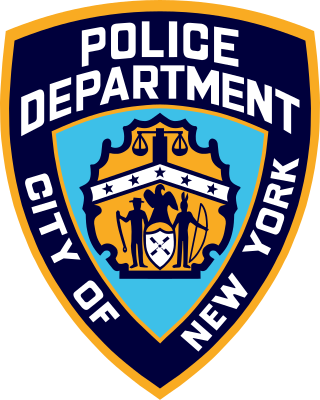
The New York City Police Department (NYPD), officially the City of New York Police Department, established on May 23, 1845, is the primary municipal law enforcement agency within the City of New York, the largest and one of the oldest in the United States.

The New York City Subway is a rapid transit system owned by the government of New York City and leased to the New York City Transit Authority, an affiliate agency of the state-run Metropolitan Transportation Authority (MTA). Opened on October 27, 1904, the New York City Subway is one of the world's oldest public transit systems, one of the most-used, and the one with the most stations, with 472 stations in operation. Stations are located throughout the boroughs of Manhattan, Brooklyn, Queens, and the Bronx.

The New York City Transit Authority is a public-benefit corporation in the U.S. state of New York that operates public transportation in New York City. Part of the Metropolitan Transportation Authority, the busiest and largest transit system in North America, the NYCTA has a daily ridership of 8 million trips.

The New York City Subway is a rapid transit system that serves four of the five boroughs of New York City, New York: the Bronx, Brooklyn, Manhattan, and Queens. Its operator is the New York City Transit Authority (NYCTA), which is controlled by the Metropolitan Transportation Authority (MTA) of New York. In 2016, an average of 5.66 million passengers used the system daily, making it the busiest rapid transit system in the United States and the seventh busiest in the world.
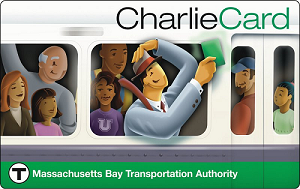
The CharlieCard is a contactless smart card used for fare payment for transportation in the Boston area. It is the primary payment method for the Massachusetts Bay Transportation Authority (MBTA) and several regional public transport systems in the U.S. state of Massachusetts.

The Metropolitan Transportation Authority Police Department (MTAPD) is the police agency of New York's Metropolitan Transportation Authority
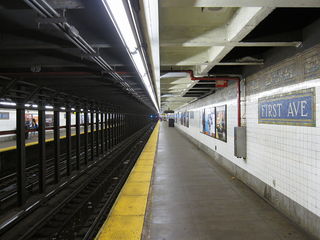
The First Avenue station is a station on the BMT Canarsie Line of the New York City Subway. Located at the intersection of First Avenue and East 14th Street at the border of Stuyvesant Park, Stuyvesant Town, and the East Village in Manhattan, it is served by the L train at all times.
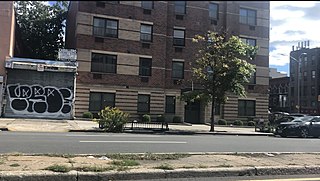
Crime rates in New York City have been recorded since at least the 1800s. They have spiked ever since the post-war period. The highest crime totals were recorded in the late 1980s and early 1990s as the crack epidemic surged, and then declined continuously through the 2000s.

The fares for services operated under the brands of MTA Regional Bus, New York City Subway, Staten Island Railway (SIR), PATH, Roosevelt Island Tramway, AirTrain JFK, NYC Ferry, and the suburban bus operators Nassau Inter-County Express (NICE) and Westchester County Bee-Line System (Bee-Line) are listed below.
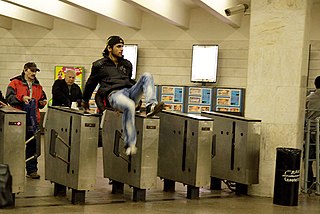
Fare evasion or fare dodging, fare violation, rarely called ticket evasion, is the act of travelling on public transport without paying by deliberately not buying a required ticket to travel. It is a problem in many parts of the world, and revenue protection officers and ticket barriers, staffed or automatic, are in place to ensure only those with valid tickets may access the transport. The term fare avoidance is sometimes used as a euphemistic synonym and sometimes used to refer to the lawful use of much cheaper tickets.

Throughout the history of the New York City Police Department, numerous instances of corruption and misconduct, and allegations of such, have occurred. Over 12,000 cases have resulted in lawsuit settlements totaling over $400 million during a five-year period ending in 2014. In 2019, taxpayers funded $68,688,423 as the cost of misconduct lawsuits, a 76 percent increase over the previous year, including about $10 million paid out to two exonerated individuals who had been falsely convicted and imprisoned.

Andy Byford is a British transport executive who has held several management-level positions in transport authorities around the world, such as the Toronto Transit Commission (TTC), New York City's Metropolitan Transportation Authority (MTA), and Transport of London (TfL).
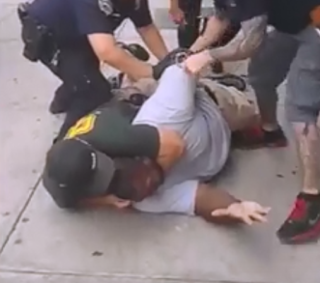
On July 17, 2014, Eric Garner was killed in the New York City borough of Staten Island after Daniel Pantaleo, a New York City Police Department (NYPD) officer, put him in a prohibited chokehold while arresting him. Video footage of the incident generated widespread national attention and raised questions about the use of force by law enforcement.
The Empire Center for Public Policy is a fiscally-conservative think tank and government-watchdog group based in Albany, New York.

The B46 bus route constitutes a public transit corridor in Brooklyn, New York City. The route runs primarily along Utica Avenue north from the Kings Plaza shopping center through Eastern Brooklyn, with continued service west along Broadway to the Williamsburg Bridge Plaza Bus Terminal. The corridor was originally served by a streetcar line, known as the Utica and Reid Avenues Line, Utica−Reid Line, Reid−Utica Line, Reid Avenue Line, or Utica Avenue Line until 1951, when the line was replaced by bus service. The bus route is operated by MTA Regional Bus Operations under the New York City Transit brand.
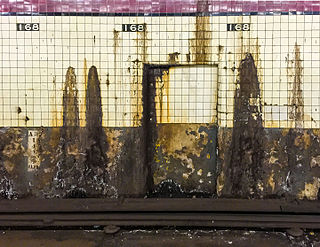
In 2017, New York Governor Andrew Cuomo declared a state of emergency for the Metropolitan Transportation Authority (MTA) due to ongoing reliability and crowding problems with mass transit in New York City. This order applied particularly to the New York City Subway, which was the most severely affected by dilapidated infrastructure, causing overcrowding and delays. With many parts of the system approaching or exceeding 100 years of age, general deterioration could be seen in many subway stations. By 2017, only 65% of weekday trains reached their destinations on time, the lowest rate since a transit crisis in the 1970s. To a lesser extent, New York City buses operated by the MTA were also affected. Both the subway and the buses are run by the New York City Transit Authority (NYCTA), a subsidiary of the MTA. A separate crisis at Penn Station affected the routes of the three railroad agencies that provided service into the station. Media outlets deemed these crises "the summer of hell".

Decolonize This Place is a movement based in New York City that organizes around Indigenous rights, black liberation, Palestinian nationalism, de-gentrification, and economic inequality. Their actions often take place at museums and cultural institutions and focus on colonialist tendencies within the art world.

The Anti-Extradition Law Amendment Bill Movement, also known as the 2019 Hong Kong protests, or the 2019–2020 Hong Kong protests, were a series of demonstrations from 15 March 2019 in response to the introduction by the Hong Kong government of the Fugitive Offenders amendment bill on extradition. It is one of the largest series of demonstrations in the history of Hong Kong, with thousands arrested in violent scenes. By mid-2020, the Hong Kong government had declared the restoration of peace and stability with the imposition of the national security law.
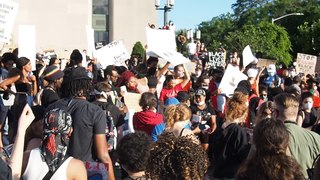
George Floyd protests in New York City took place at several sites in each of the five New York City boroughs, starting on May 28, 2020, in reaction to the murder of George Floyd. Most of the protests were peaceful, while some sites experienced protester and/or police violence, including several high-profile incidents of excessive force. Looting became a parallel issue, especially in Manhattan. As a result, and amid the COVID-19 pandemic, the city was placed under curfew from June 1–7, the first curfew in the city since 1943. The protests catalyzed efforts at police reform, leading to the criminalization of chokeholds during arrests, the repeal of 50-a, and other legislation. Several murals and memorials have been created around the city in George Floyd's honor, and demonstrations against racial violence and police brutality continue as part of the larger Black Lives Matter movement in New York City.


















